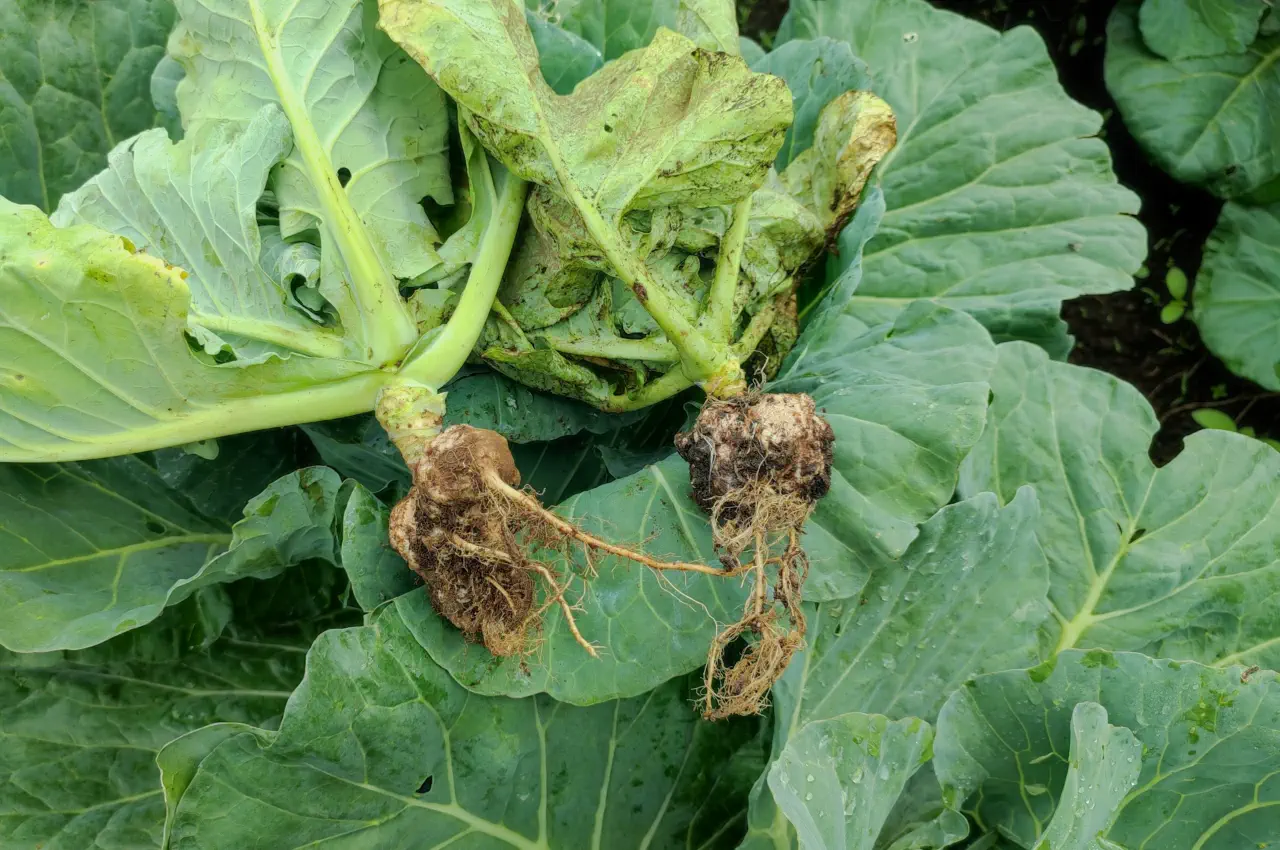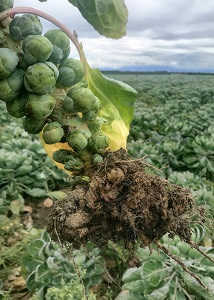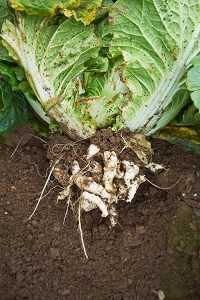Pak Choi is grown for its tasty leaves which are superb when added to stir fries and salads.
The taste is similar to that of mild cabbage and spinach and is a popular addition to many oriental dishes.

This is a question many gardeners, especially those who are new to vegetable growing, might ask and it’s a very important subject. Clubroot (Plasmodiophora brassicae) is a soil-borne fungal disease, which affects all members of the Brassica family including many related ornamental flowering type plants. Plants that become infected with clubroot will display stunted growth and in many cases a purple or yellow colouring on foliage. They will generally show signs of wilting in warm weather only to recover later in the day when the air cools.
However, below ground level, the roots of infected plants will become swollen and greatly distorted. A vast reduction in the plant’s fine root system makes it difficult, or near impossible, for the plants to absorb adequate amounts of water and nutrients, which can result in the early death of the plant. There is no effective chemical application available for clubroot and no known cure for the disease
Effectively controlling the clubroot fungus is very difficult as it is thought the disease can remain present in the soil for up to 20 years. The roots of infected plants will become swollen and distorted, eventually turning black as they rot, discharging further spores into the soil. Affected plants will then fail to mature and subsequently die prematurely.
Clubroot is a micro-organism that can be spread by wind and water but is very often spread locally by the use of gardening tools, equipment and footwear coming into contact with infected soil. Good hygiene, therefore, is absolutely essential. The fungus thrives in wet conditions and in soils with a low pH, which means acid type soils are more prone to harbour the disease. The addition of lime to infected soil can help raise the pH, ideally to around 7.2, and may offer limited control. Rotating crops over a 3-4 year cycle may also offer some limited control. Sterilising gardening equipment including wheelbarrows might help prevent the spread of the disease to other areas of the garden or allotment.
It’s important that infected plants are not composted but instead, removed from the site completely or incinerated.

 All brassicas are at risk of infection if clubroot is confirmed as being present in the soil. The list includes some of the most popular vegetables such as:
All brassicas are at risk of infection if clubroot is confirmed as being present in the soil. The list includes some of the most popular vegetables such as:
Cabbage
Cauliflower
Calabrese
Brussel sprouts
Swede
Turnip
Broccoli
Radish
Also, some related flowering plants such as stocks and wallflowers can be affected. In all, around 300 plants of the cruciferous family, which includes brassicas, mustard and cress can be affected by the clubroot disease.
The best method of control is prevention. If your garden or allotment is made up of healthy soil then rather than risk infection and having to deal with the consequences, it’s far better to take precautions. General hygiene should be the first consideration. If you have more than one vegetable plot or kitchen garden and they are in different locations then ensure all your gardening equipment is cleaned thoroughly so that fungal spores are not inadvertently transferred. This advice also applies to footwear and wheelbarrows. Crop rotation is another way to reduce the spread of fungal infections and other soil-borne diseases.
Always buy clubroot resistant seeds for all brassica crops and any brassica related plants such as wallflowers, Arabis (rock cress) and stocks. There are many types of weeds, which are also related to the mustards and form part of the brassica family. Many of these weed plants are susceptible to clubroot, so it’s important to ensure your growing areas are kept free from weeds at all times.
Due to clubroot being such a difficult disease to control, in recent years there have been a number of major breakthroughs in the cultivation and production of disease-resistant brassicas and seeds. Plants grown from clubroot resistant seeds are able to grow perfectly well on infected soil but more importantly, they will help reduce the spread of the disease over time. The main selections for clubroot resistant seeds include varieties of the most popular vegetables such as Cabbage, Brussel sprouts, Calabrese (broccoli) and Cauliflower. However, a selected clubroot resistant Swede variety seed is also now available.
Some clubroot resistant brassica seeds currently available:
Brassica Seeds Selection in a Box.
5 different Clubroot Resistant Brassica varieties included.
Crispus is a clubroot resistant Maximus type - WOW!.....
Average Contents : 20 seeds
Unique clubroot resistant savoy cabbage.....
Av. Packet Contents : 20 seeds
Type : Savoy Cabbage
One of the long awaited varieties that is clubroot resistant.....
Packet Contents : 20 Seeds
Type: Ballhead / Round
Lodero is a clubroot resistant maincrop variety.....
Average Seed Contents: 20 Seeds
Type: Red Ballhead / Round
Clapton is the first available variety with clubroot resistance.....
Seed Packet Contents: 20 Seeds
Clubroot Resistant Brassica Seed collection, 4 varieties....
Gowrie is an early purple skinned variety that offers Club Root.....
Av. Packet Contents : 250 seeds
Marian is a purple topped, yellow fleshed variety with resistance to.....
Av. Packet Contents : 250 seeds
More varieties are sure to become available in time, including radish and turnip but until then it is recommended to only use those clubroot resistant varieties where clubroot is known to be a serious problem.
Did you find this post Useful? So will others, please like it on Facebook, or share on Twitter.
Have you any other top Club root growing tips that you think are worth a mention? Please leave a comment below and let us know....
All blog content on this page is copyright of SimplySeed and is not to be reproduced without prior written permission. ©